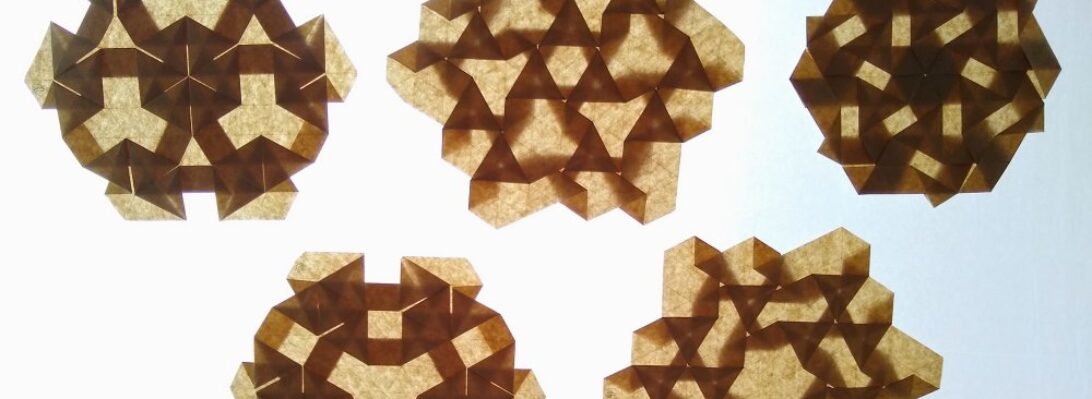I _may_ have mentioned I am a member of Papermakers and Artists of Queensland (PAQ). I was approached to contribute to a soon to be mounted gallery exhibition entitled “All Stitched Up”.
I had no intention of contributing because … I don’t stitch, and integral to each work needed to be stitching.
Stitch Artist Fee Garrett-Benson approached me and encouraged me to get involved, suggesting a collaboration. After some to and fro of ideas, a “quilt” made up of separate origami elements stitched together was settled upon.

I love Shuzo Fujimoto’s “Hydrangea”, so decided to echo the Crochet squares my Mum used to make into blankets and fold 12 squares (4×3) to suggest a quilt.
Dear friend Janet brought back many glorious papers from her trip to Japan recently, and I remembered a particularly stunning sheet of gold dry-brushed red Kozo which I figured would be perfect. I managed to cut 12 21cm squares from the sheet with nearly nothing left (which was pleasing) and set about folding hydrangea units.
Tentatively I handed them (and some Kraft maquettes) to Fee, we talked threads. Initially I thought gold thread until Fee showed me some luscious red silk thread that was nearly the same colour as the paper and the decision was easy.
After experimenting with typed of stitch and stitch placement on the Kraft maquettes, Fee decided on lovely loose loops to join the quilt units together.
The result is wonderful. I framed the quilt and the WIP experiments in Perspex sandwich frames (from Ikea) and am quite chuffed with the result.

The production fold and WIP bound for PAQ “All Stitched Up” exhibition, soon to be on display at the Gympie Regional Gallery 22 Feb – 23 Mar 2024.

























